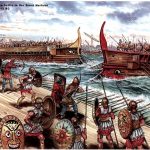
ATHENS vs SPARTA: The Peloponnesian Wars
September 26, 2025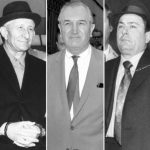
13 of the most Notorious Gangsters in American History
November 21, 2025On this blog, we’ve talked about Pirates, Vikings, Mobsters, and even Witches, but there’s another popular history-themed Halloween costume that I’ve overlooked till now: Cowboys!
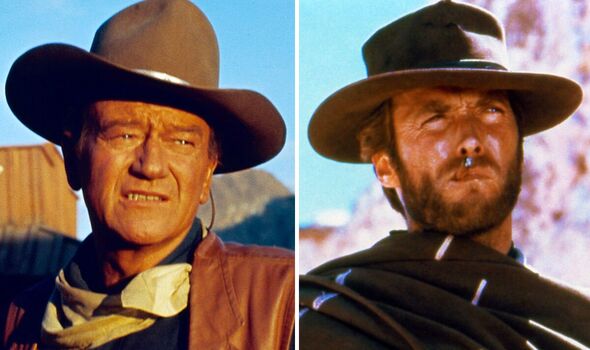
John Wayne and Clint Eastwood
 What we often refer to as the “Wild West” was a period of radical westward expansion across the American frontier from about 1865 to 1900, following the Civil War. Throughout the 20th Century, Hollywood helped shape the public’s perception of the American Frontier with a heightened, romanticized, and often white-washed view of the past – from “High Noon” (1952) to “Tombstone” (1993), along with iconic John Wayne movies like “The Man Who Shot Liberty Valance” (1962), or Clint Eastwood’s classic spaghetti western, “The Good, the Bad, and the Ugly” (1966). But beyond the mythology of this lawless land being tamed by a single brave Sheriff in a 10-gallon hat with his trusty horse and six-shooter, there were in fact a number of legendary figures who often get overlooked.
What we often refer to as the “Wild West” was a period of radical westward expansion across the American frontier from about 1865 to 1900, following the Civil War. Throughout the 20th Century, Hollywood helped shape the public’s perception of the American Frontier with a heightened, romanticized, and often white-washed view of the past – from “High Noon” (1952) to “Tombstone” (1993), along with iconic John Wayne movies like “The Man Who Shot Liberty Valance” (1962), or Clint Eastwood’s classic spaghetti western, “The Good, the Bad, and the Ugly” (1966). But beyond the mythology of this lawless land being tamed by a single brave Sheriff in a 10-gallon hat with his trusty horse and six-shooter, there were in fact a number of legendary figures who often get overlooked.
So without further ado, here’s a list of some of the most notable gunslingers from the era, both lawmen and outlaws alike…
1 – Wild Bill Hickok and Calamity Jane
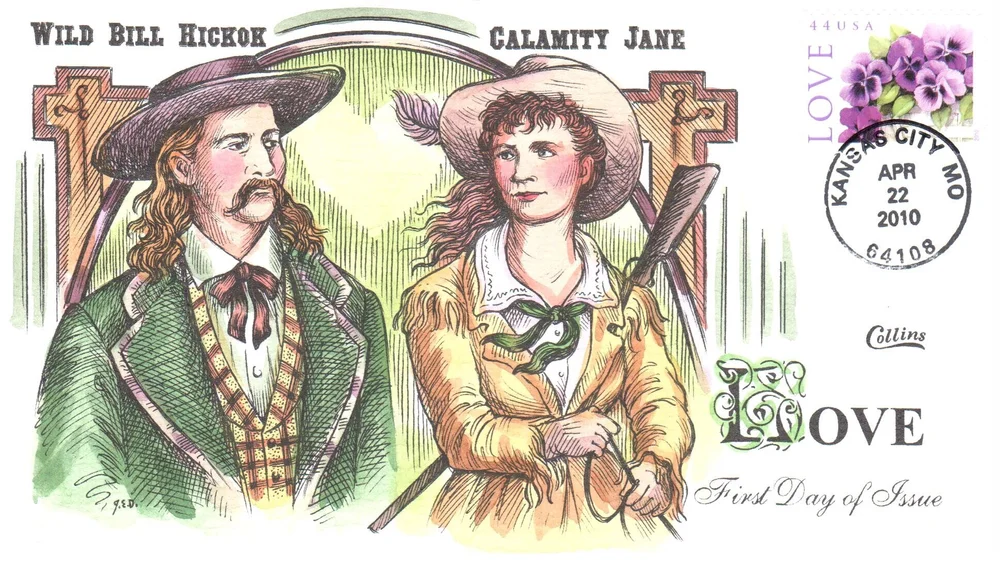
Born on a Illinois farm in 1837, James Butler “Wild Bill” Hickok became one of the most famous of the early outlaws in the Old West. Between a number of infamous duels throughout his life, he worked as a stagecoach driver, later a cattle rustler, had a brief stint as a lawman in Nebraska and Kansas, and even served as a Spy for the Union Army during the Civil War! He earned a bit of a reputation for his gunslinging antics (and many a tall tale) leading to a career as an actor and showman.
During his time in the town of Deadwood (in modern-day South Dakota), “Wild Bill” met “Calamity Jane”, another folk hero in her own right. Martha “Calamity” Jane Canary was born in 1852, Missouri. Her family moved out to Montana by wagon train in 1865, with her mother dying of pneumonia en route. Then in 1867, she lost her father shortly after moving to Salt Lake City, Utah, leaving her alone at 14 to take care of her 5 siblings! From there, she loaded the family up on the Union Pacific Railroad and moved out to the Wyoming Territory, where she eventually made a living as a part-time prostitute.
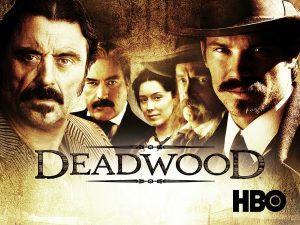
She soon earned a name for herself as sharpshooter and frontierswoman and by 1876 had earned the name “Calamity Jane”, because any men who offended her would “court calamity”. According to multiple (somewhat disputed) accounts, “Wild Bill” and “Calamity Jane” hooked up, got married, and had a kid, before divorcing, in between several adventures on the Great Plains. In one such account, Jane helped save multiple passengers in an stagecoach by diverting a party of Plains Indians in pursuit of them. During the incident, the stagecoach driver was killed, forcing her to take over the reigns, and she managed to get them safely to their destination at Deadwood.
Unfortunately, “Wild Bill” met his end in 1876 during a poker match at a Saloon in Deadwood, when another gambler, “Crooked Nose” Jack McCall drew his Colt Revolver and shot him in the back of the head. He had two pairs in his hand – black Aces and black 8’s, now known as a “Dead Man’s Hand”. According to one claim, following Hickok’s death, Jane attempted to hunt Jack McCall down with a meat cleaver.
“Calamity Jane” went on to appear in Buffalo Bill’s Wild West Show as an exposition shooter in 1893, and continued to spread the legend of her late ex-husband until 1903 when she fell ill after her latest bout of binge-drinking and passed away. She was buried next to her “Wild Bill”.
2 – Jesse James and his Posse of Outlaws

Jesse James is easily one of the most famous / infamous outlaws of the Old West, as the notorious leader of the ‘James-Younger Gang’. Born in 1847, in Missouri, he grew up with Pro-Southern sympathies, and even joined up with the Confederate guerillas known as the “Bushwhackers”, with his brother Frank. The Bushwhackers were later accused of committing multiple atrocities during the Civil War, most notably, the Centralia Massacre of 1864.
The James Brothers became professional outlaws following the war, robbing numerous trains, stagecoaches, and banks across the Midwest, leaving a brutal bloodbath in their wake. Jesse and Frank James soon joined forces with another group of ex-confederate criminals, Cole Younger, and his three brothers: Jim, John, and Bob. Together, the James-Younger Gang operated from 1866 until 1876 – when an attempted robbery of a bank in Minnesota went awry, leading to the death and capture of several members of their posse.
Jesse James himself managed to get away scot-free, and continued to cause trouble for another few years, until his past caught up with him on April 3rd, 1882 when he was shot and killed by ‘the coward’ Robert Ford, one of Jesse’s new recruits that decided to betray him for the reward money…
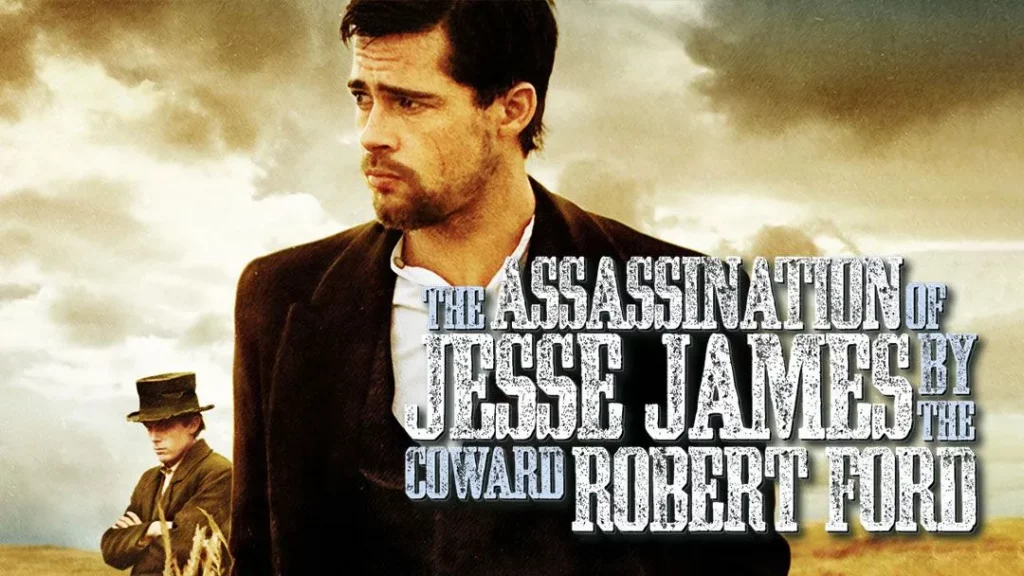
3 – Belle Starr – “The Bandit Queen”
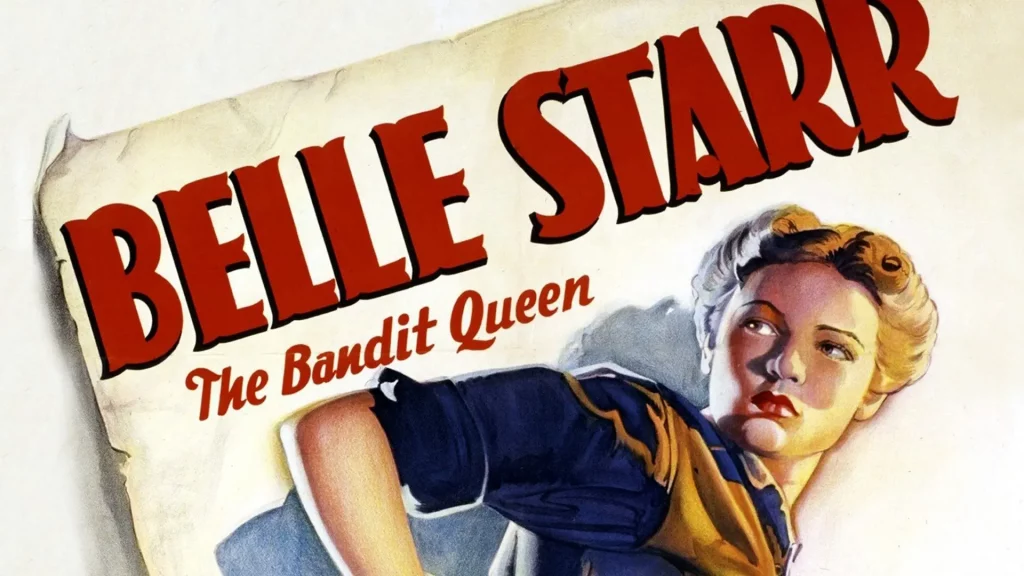
Myra Maybelle Shirley Reed Starr aka “Belle Starr” was born in 1848, a distant relative of the Hatfield family (as in the Hatfields and McCoys family feud). Her family supported the Confederacy during the Civil War, and from a young age she became closely associated with the James-Younger Gang. Her first husband, Jim Reed was involved in a number of murders and robbery. They had two children and she allegedly was an accessory in a stagecoach heist. Her second husband, Sam Starr was a member of the Cherokee Tribe (in what is now Oklahoma), and their home became a hideout for all sorts of outlaws in the Indian Territories.
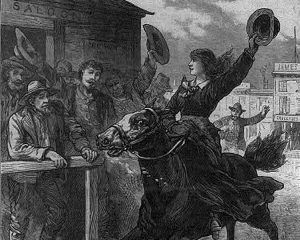
Despite her fearsome reputation however, her only conviction however was in 1883 for horse theft, in which “Hanging Judge” Isaac Parker sentenced her to just 9 months in a federal prison. Just a few short years later, she was tragically (and mysteriously) gunned down by a shotgun blast in 1889. Her murder was never solved. That same year, a semi-fictional dime novel titled “Bella Starr, the Bandit Queen, or the Female Jesse James” was released, causing her to become a larger-than-life legend that has since inspired a number of books, movies, songs, TV shows, and even video games.
4 – Bass Reeves – The Deputy

Bass Reeves wasn’t just the first Black Deputy US Marshall west of the Mississippi, he was perhaps one of the most successful and formidable lawmen of the Wild West, and one of the biggest unsung heroes in American history!
Born into slavery in 1838, Arkansas, Reeves was named after his grandfather, Bass Washington. During the Civil War, Bass was forced to accompany Confederate Colonel George Reeves in Texas, but after an altercation with his enslaver over a card game, he managed to escape and fled across the border into ‘Indian Territory’ (modern day Kansas and Oklahoma). It was there that he was taken in by the Cherokee, Creek, and Seminole tribes, learning their languages, customs, and even tracking skills. Finally, in 1865, the war ended, and he was freed by the Emancipation Proclamation, so he decided to return to Arkansas where he ran a modest farm.
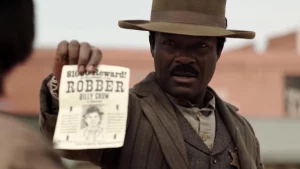
Everything changed in 1875 when, at age 37, he was appointed as a deputy by Isaac C. Parker, who recruited him for his knowledge of the terrain and his relations with the local tribes. Bass Reeves spent the next 32 years as a lawman in a region saturated with thieves, bandits, bootleggers, and swindlers, and became a larger-than-life legend for his unmatched skills, and unwavering integrity. Being the complete and total badass action hero he was, Deputy Reeves managed to round up an insane 4,000 arrests in his lifetime, and even outgunned 20 outlaws in the line of duty! He once arrested the preacher who baptized him for selling illegal moonshine, and even hunted down his own son after he murdered his wife. When Belle Starr (the Bandit Queen) heard that it was Bass Reeves had a warrant out for her arrest, she immediately turned herself in.
If all that isn’t enough, many historians believe that he was the primary inspiration for one of the earliest comic book heroes – “The Lone Ranger”!

Unfortunately, they got his ethnicity wrong… because racism.
5 – John Wesley Hardin – “The Gentleman Killer”
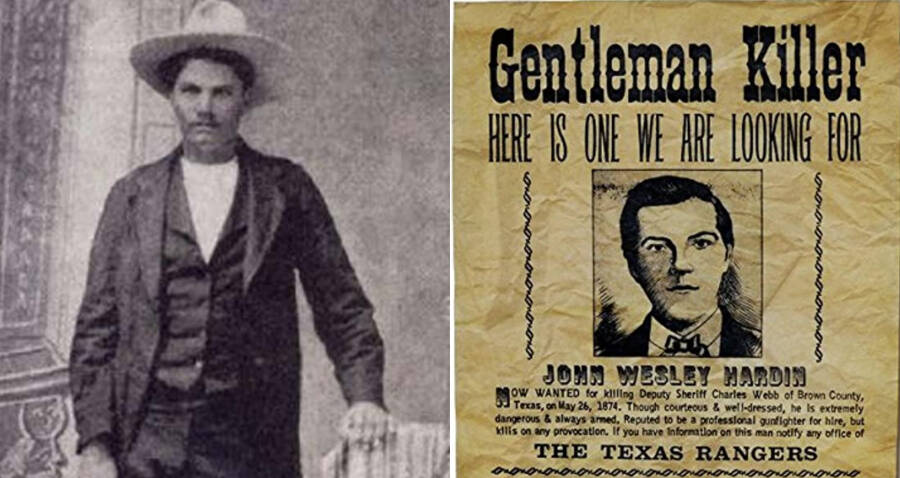
Born in 1853, John Wesley Hardin, was the son of a Methodist preacher, who grew up to become one of the most notorious outlaws in the west. He was educated, well-dressed, and polite, but had a violent temper. “The Gentleman Killer” killed his first man, at just 15, in 1868, which he claimed was in self defense. Worried he wouldn’t receive a fair trial, he ran from authorities and killed three Union soldiers who were sent after him! John was known for his quick-draw, and claimed to have killed 42 men, and that he “never killed anyone who did not need killing”. In 1871, Kansas, he once killed a man for snoring! In annoyance, he fired his pistols through the wall of his hotel room, killing the loud sleeper.
Hardin was on the run as a wanted man for most of his life, with a $4,000 bounty on his head. He was eventually tracked down in Pensacola, Florida, by the famous Texas Ranger, John B. Armstrong, in 1877. He was tried the following year, for the murder of Deputy Sheriff Charles Webb, and sentenced to 25 years. Ironically, while in prison, he studied law, and helped run the prison’s Sunday school. He was later pardoned after 17 years, in 1894. He met his unceremonious end a year later, in El Paso, Texas, when an off-duty constable, and rival, John Selman Sr. shot him in the back.
6 – Wyatt Earp (and Doc Holiday) – Shootout at the O.K. Corral

The entire genre of ‘Western’ movies is built on the notion that the American west was like a post-apocalyptic lawless wasteland where bar fights and gun duels were commonplace, but while those did happen, in reality they were the exception to the rule. Believe it or not, most frontier towns had stricter gun control than we have today! And while the occassional ‘shoot out’ did happen, they were rather rare, because bullets weren’t exactly cheap, and the lawmen of the Old West didn’t mess around. All that said, perhaps the single most famous event in the history of the Wild West was the infamous “Shootout at the OK Coral” in Tombstone, Arizona…
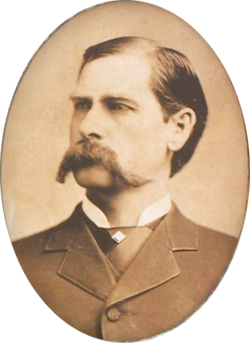
Wyatt Earp
The most famous figure involved in the incident was the legendary lawman, Wyatt Earp. Wyatt was born in 1848, in Illinois, and grew up with five brothers: Newton, James, Morgan, Warren, and Virgil. Their family moved out to California in 1864. Wyatt attempted to join the Army and fight in the Civil War at 13, but his father forbade him. Years later, Wyatt got into his first duel with a railroad brakeman who called him “California Boy”, implying that he was a coward who ran away from the war.
Wyatt had a long storied life cycling through several careers over the years, including: constable, buffalo hunter, saloon keeper, boxing referee, aspiring gold miner, ‘professional gambler’, and even a stint as a brothel manager. He was also married four times throughout his life, to: Urilla Sutherland (who tragically died of typhoid fever), Sally Heckell (a 16-year-old hooker?!), Mattie Blaylock (a laudanum addict who died of an overdose), and Josephine Sarah Marcus (the two reportedly had a contentious ‘stormy’ relationship between her controlling behavior and Earp’s rowdy nature).
Sometime between his second and third wife, Wyatt Earp moved out to Wichita, Kansas in 1874, where he stumbled into a gig as a deputy after helping an off-duty officer track down a group of thieves who’d hijacked a wagon. The Earp brothers moved west to Dodge City after Wyatt was basically kicked out of the town for getting into a fist fight with the former Marshall. During his time there, Wyatt Earp met John “Doc” Holiday while tracking a suspect.
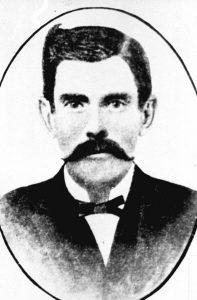
Doc Holiday
Doc Holiday was an eccentric dentist with a gambling problem and quite the reputation for a number of mythic altercations, so of course the two immediately hit it off and became best buds. In fact, Doc Holiday saved Wyatt’s life once in 1878 when he was surrounded and outgunned by a gang of “cowboys” led by Ed Morrison. Holiday overheard the commotion in the saloon while he was in the back playing poker, and stepped out and put his pistol to Morrison’s head, forcing the men to disarm and flee. While in Dodge City, Holiday joined forces with Deputy U.S. Marshal Bat Masterson in an attempt to stop a brewing guerilla war between two railroad companies vying for the same contract. Around this time, Doc also hooked up with his common-law wife ‘Big Nose’ Kate, who was regarded as “Tough, stubborn, and fearless” – despite having a formal education, she chose to work as a prostitute due to the freedom and independence it offered her.
By 1879, Wyatt Earp, along with his brothers (Virgil, James, Warren, and Morgan), as well as Doc Holiday (and all of their wives) all moved out to the Arizona territory, eventually settling in the newly established town of Tombstone, which grew exponentially from just 100 residents to well over a thousand in under a year, thanks to the local silver boom, and soon became the largest boomtown in the Southwest! Virgil Earp became the town’s Marshall, with his brother Morgan serving as a deputy, while Wyatt Earp worked as the local saloon’s bouncer. In an effort to combat crime, an ordinance was passed that forbade weapons within the city limits – specifically bowie knives and firearms.
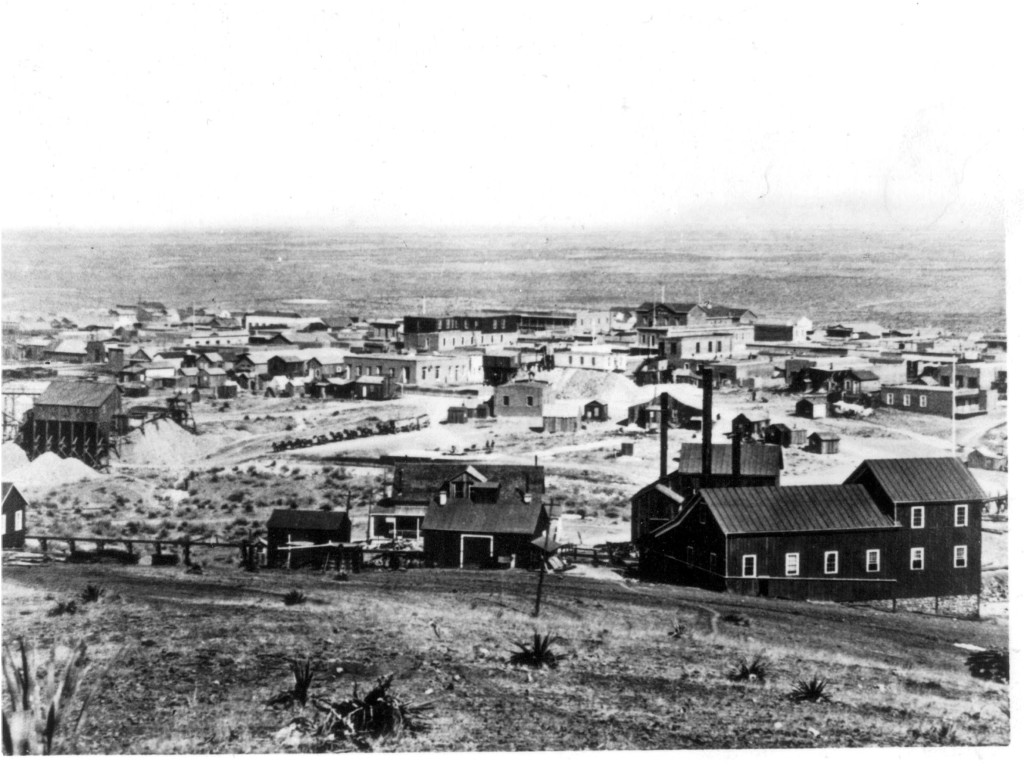
Tombstone – circa 1881
During this time, the townsfolk and local businesses were terrorized by a group of unruly scoundrels. These hooligans were part of a local confederation of outlaws, ranchers, and cattle rustlers known as “The Cowboys”. The Cowboys openly defied the town’s authority and were prime suspects in a number of stagecoach robberies, including one incident involving Wells Fargo, in which the Earp brothers teamed up with Bat Masterson in an effort to track down the culprits, sparking a deadly feud between the two factions.
 Tensions grew to a boiling point in the fall of 1881 when a group of Cowboys, led by Ike Clanton, drunkenly stumbled into town looking for a fight. The rowdy cowpoke spent all night bar-hopping, brandishing their weapons, and publicly threatened to kill the Earp brothers. The following morning, Wyatt Earp confronted Ike Clanton and Tom McLaury, pistol-whipping them both before disarming the men, and arresting them for violating the firearm ban.
Tensions grew to a boiling point in the fall of 1881 when a group of Cowboys, led by Ike Clanton, drunkenly stumbled into town looking for a fight. The rowdy cowpoke spent all night bar-hopping, brandishing their weapons, and publicly threatened to kill the Earp brothers. The following morning, Wyatt Earp confronted Ike Clanton and Tom McLaury, pistol-whipping them both before disarming the men, and arresting them for violating the firearm ban.
On Wednesday, October 26th, 1881, Virgil Earp (the town’s Marshall), joined by his brother Morgan, deputized both Wyatt and Doc. Around 3:00 PM, the four of them marched down to Fremont Street to confront the gang of Cowboys, in the vacant lot, between the Harwood House, and C.S. Fly’s Photography, near the O.K. Corral. Ike Clanton was joined by his brother, Billy, along with Frank and Tom McLaury, and their associate, Billy Claiborne, who immediately ran away.
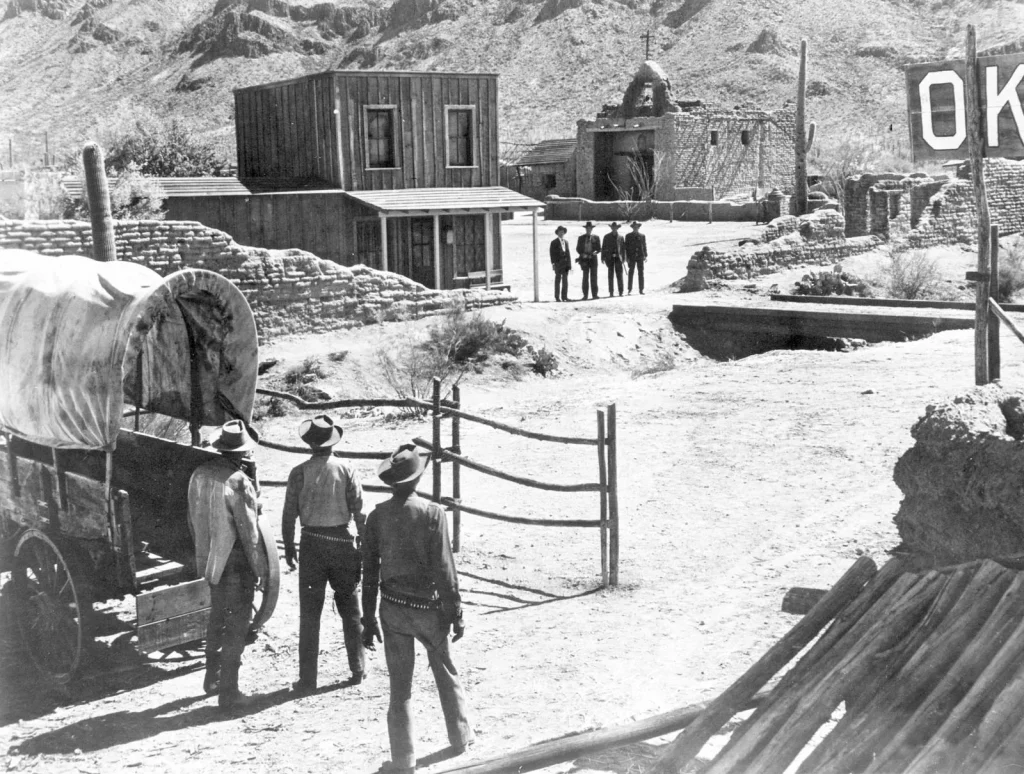
Virgil Earp shouted, “Throw up your hands!” to the assembled cronies. Eyewitness accounts vary, and its unclear who fired the first shot, but what we do know is that the whole block erupted into chaos as pretty much everyone involved started shooting! Ike, who had already been disarmed, fled the scene while the small lot erupted in gunfire. Doc Holiday was grazed, but managed to take down Tom McLaury with a shot gun. Virgil took a bullet to his calf, while Morgan was shot through his shoulders, but the Earp Brothers managed to hit their mark, killing both Frank and Billy. Miraculously, Wyatt was completely unscathed. The entire gunfight only lasted about 30 seconds, and when the dust settled: three men were left wounded, and three more were lying dead in the dirt.
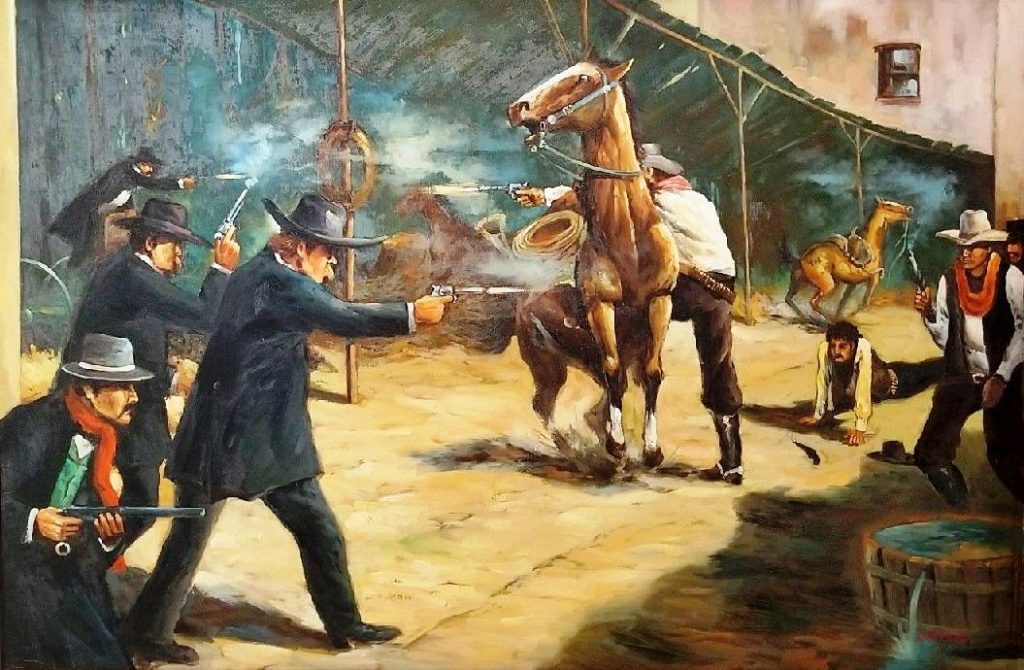
In the aftermath of the shoot out, Doc Holiday and the Earp brothers were arrested and charged with murder by Sheriff Johnny Behan, but after a 30-day hearing, Judge Wells Spicer ruled that the lawmen were justified in their actions and acquitted on all charges. However, following the gunfight, the Cowboys sought revenge – soon after, Virgil was ambushed and shot in the back, and their brother Morgan was assassinated while playing billiards, the following year. Following his brother’s murder, Wyatt Earp decided to take the law into his own hands. He and the Doc assembled a crew of vigilantes for a little vendetta of their own. Together, they rode out across the west, hunting down the men responsible.
Years later, Stuart Lake’s 1931 biography, “Wyatt Earp: Frontier Marshal” cemented the entire tale as an immortal piece of American folklore that inspired a number of movies, most notably 1993’s “Tombstone” (starring: Kurt Russel, Val Kilmer, and Sam Elliot), and 1994’s “Wyatt Earp” (starring: Kevin Costner, Dennis Quaid, and Gene Hackman) – both absolutely worth watching!
7 – “Billy the Kid” – Wanted: Dead or Alive!
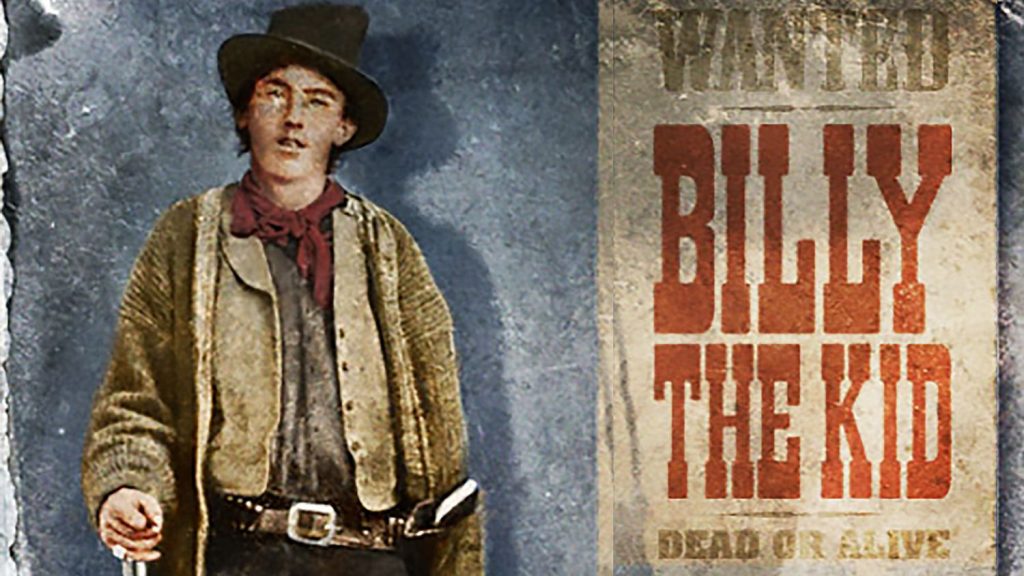
“Billy the Kid”, born Henry McCarty in 1859, is perhaps one of the most well known outlaws of the Wild West. But honestly? He was kind of a screw up.
After being orphaned at 15, he was first arrested for stealing food in 1875. Just 10 days later, he robbed a Chinese laundry and was arrested again, but managed to escape. From there he fled from New Mexican Territory into Arizona. He quickly went from being a common crook to a full-fledged federal fugitive. By 1877 he took on the alias “William H. Bonney”. After becoming a wanted man in Arizona for killing a blacksmith, “Billy” returned to New Mexico where he joined up with a group of cattle rustlers, and took part in the Lincoln County War of 1878 where he was charged with killing three men, including Sheriff William J. Brady and a deputy.
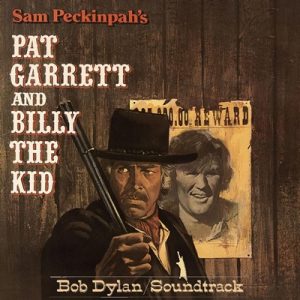
“Billy the Kid” gained notoriety in 1880 after The New York Sun and the Las Vegas Gazette published tales about his crime spree. The very next month, Sheriff Pat Garrett managed to capture Billy and his gang, after several failed attempts. The following year, William Bonney was tried and convicted, sentenced to hang, but managed to escape from jail, killing two more sheriff’s deputies in the process! Billy managed to evade capture for another two months until Pat Garret caught up with Bonney at Fort Sumner on July 14th, 1881.
Apparently, Billy casually walked into a dark room late at night (according to some he got up to get a midnight snack) and failed to recognize Garret due to poor lighting, he asked “Who is it?” in Spanish, drawing his gun, while backing away. The Sheriff recognized the young man’s voice and fired twice, hitting “Billy the Kid” in the chest, ending his short career at just 21 years old.
Meanwhile, Pat Garret had a string of bad luck himself – he attempted to claim the reward money and was turned down, he was then shunned by the public after claims that he’d killed “Billy the Kid” in a “cowardly way”, and after losing his job as Sheriff, he then failed in his attempts to get elected to the Senate, briefly served under President Theodore Roosevelt as a Customs Collector before losing the gig over a number of scandals, became an alcoholic, and ultimately was murdered over a land dispute.
The legend surrounding “Billy the Kid” has endured long after his demise, inspiring over 50 movies and TV series, most notably his appearance in the time-traveling comedy, “Bill and Ted’s Excellent Adventure” (1989).

He’s the one to the right of Socrates
8 – Annie Oakley

Phoebe Ann Mosey aka “Annie Oakley” was born in Ohio, in 1860, and grew up to become one of the most famous American sharpshooters, starring in Buffalo Bill’s Wild West show. As a child, she developed hunting skills in order to help provide for her impoverished family. By age 15 she won a shooting contest against Frank E. Butler, who she then married in 1876. In 1885, she joined up with Buffalo Bill and quickly became the star of the show, performing all across the country and Europe, before royalty and heads of state. One of her popular stage acts involving shooting a cigar out of her husband’s hand. She even performed for one of Thomas Edison’s earliest Kinetoscope films in 1894!
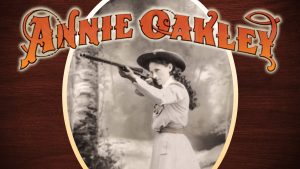
During her time with the traveling troupe, she encountered the Lakota Leader, Sitting Bull (see: Custer’s Last Stand), who was impressed by her skills and immediately took a liking to her, and even (unofficially) adopted her as his own daughter, who he called “Watanya Cicilia” – meaning “Little Sure Shot”. When World War I broke out in 1914, she publicly lamented not having the foresight to shoot the German leader, Kaiser Wilhelm in order to save millions of lives.
In her later years, Annie Oakley was still setting records well into her 60’s, and put her efforts towards extensive philanthropy for women’s rights for the remainder of her years. She succumbed to pernicious anemia in 1925 at the age of 66. Her distraught husband stopped eating, dying 18 days later, and was buried next to her ashes.
9 – “Stagecoach” Mary Fields
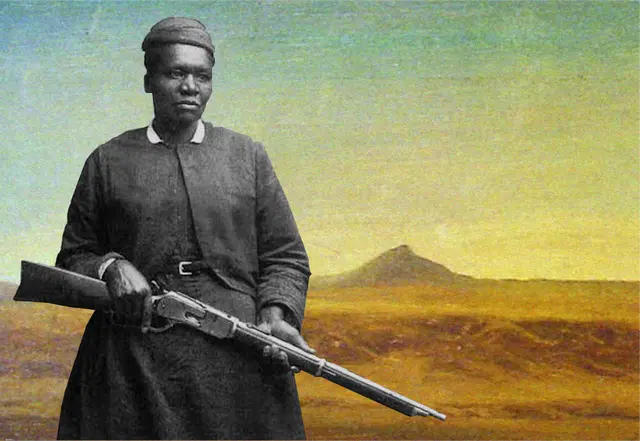
Another somewhat unsung hero of the Old West, “Stagecoach” Mary, became the first African-American female star route mail carrier in the United States. She was also a total badass. Mary Fields was born a slave in 1932, Tennessee. After the Civil War finally ended in 1865, she gained her freedom from the Emancipation Proclamation, and soon earned a job as a chambermaid aboard the Robert E. Lee, a steamboat on the Mississippi River.
Fields eventually found her way into working for a convent, first in Ohio, and later at a Catholic School for Native American girls in Montana. There she took on multiple roles typically regarded as “men’s work” back then, including: maintenance, building repairs, hauling freight, fetching supplies, and farm labor. Unfortunately, she was eventually kicked out of the convent for her “habitual profanity” and “hearty temperament” making the religious community “uncomfortable” and even complaints from a disgruntled male subordinate who she allegedly threatened with a gun.
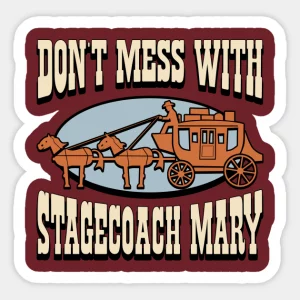
After a brief stint running a tavern, she eventually found her calling, in 1895, at 60 years old – as a mail carrier stagecoach driver for the US Postal Service! Her route took her through the unforgiving rocky terrain and brutal weather of Montana. She carried multiple firearms at all times, with her favorite being a .38 Smith and Wesson, which she used to protect herself (and the mail) from thieves, bandits, and wolves. Accompanied by a mule named Moses, ‘Stagecoach’ Mary never missed a day, and wouldn’t let anything get in the way. She narrowly avoided frostbite during a blizzard, and once stayed up all night fighting off a pack of wolves!
She finally retired from the Star Route in 1903, at the age of 71, but continued to be a force of nature, babysitting children, getting into bar fights at the local saloon, and ran a laundry service from her home. The townsfolk of Cascade, Montana embraced her and even volunteered to rebuild her home after it caught fire in 1912. She passed away at 82, in 1914, as a free woman.
10 – “Butch Cassidy and The Sundance Kid” – The Wild Bunch
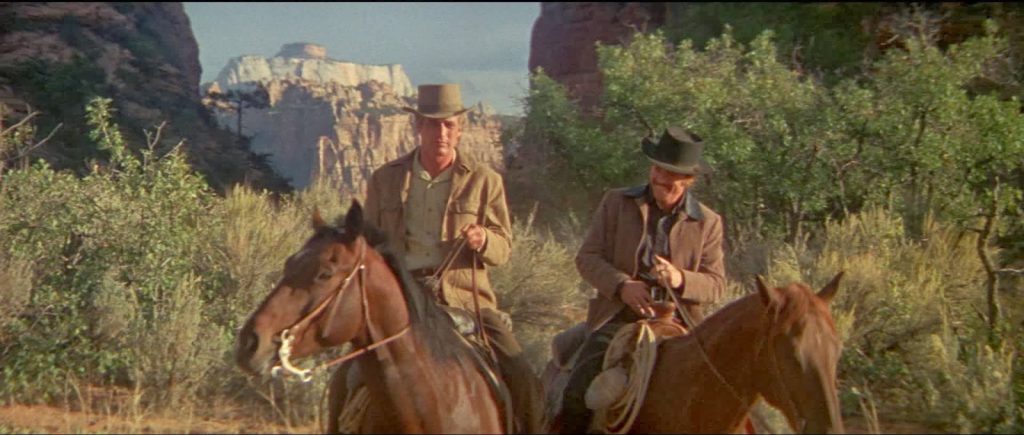
“The Wild Bunch” was one of the most successful outlaw gangs of the late 19th Century, managing to get away with several high-profile bank robberies and train heists! Organized by their leader, Butch Cassidy, the gang operated primarily out of a hideout they referred to as “The Hole-in-the-Wall” in Wyoming. Their ranks included: Kid Curry, Elzy Lay, Ben – the “Tall Texan” Kilpatrick, George ‘Flat Nose’ Curry, Will ‘News’ Carver, O.C. ‘Camilla’ Hanks, and of course Harry Longabaugh aka “The Sundance Kid”.
Robert LeRoy Parker aka ‘Butch Cassidy’ was born in 1866, in Utah, and was raised by a Mormon family. He had a background as a ranch hand and miner, but his first run-in with the law happened when he was just a kid, he stole a pie and a pair of jeans from a local shop. His criminal career began in earnest in 1889 when he and three others robbed the San Miguel Valley Bank, scoring a whopping $21,000! (That’s $735,000 in today’s money!) Unlike other outlaws like Jesse James, Cassidy was known for his charm and charisma, and would often opt for daring escapes over violent shootouts.
As for “The Sundance Kid” (Harry Longabaugh), he was born in 1867, Pennsylvania. At 15, he traveled west in a covered wagon with his cousin George to help settle his homestead near Cortez, Colorado. His first notable crime occurred in 1887, while traveling through Sundance, Wyoming where he stole a gun, a horse, and a saddle from a local cowboy. He was captured shortly after and sentenced to 18 months in jail, which was when he adopted his famous nickname. When he joined up with Cassidy’s ‘Wild Bunch’, he quickly earned a reputation for his skills as a gunfighter.
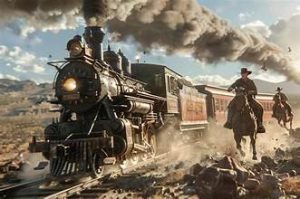 The Wild Bunch drew a mix of admiration and fear from the public, earning notoriety for their deceptive strategies, and safecracking skills. One of their boldest feats was the Wilcox Train Robbery of 1899, where the gang managed to halt a Union Pacific Train before cracking the safe with some well-placed dynamite, and narrowly escaped the pursuing lawmen. In fact, they soon drew the attention of the Pinkerton Detective Agency! As the Pinkertons closed in, the outlaws managed to stay one step ahead.
The Wild Bunch drew a mix of admiration and fear from the public, earning notoriety for their deceptive strategies, and safecracking skills. One of their boldest feats was the Wilcox Train Robbery of 1899, where the gang managed to halt a Union Pacific Train before cracking the safe with some well-placed dynamite, and narrowly escaped the pursuing lawmen. In fact, they soon drew the attention of the Pinkerton Detective Agency! As the Pinkertons closed in, the outlaws managed to stay one step ahead.
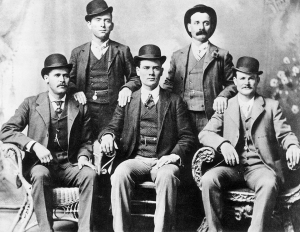
The gang, which was usually known for their clever tactics, made a fatal misstep in 1900 when they all posed for a formal portrait at a brothel in Texas, which was then put on display in Fort Worth. A Wells Fargo agent recognized the outlaw, and the photograph was soon on Wanted posters all over the country. Apparently, Butch Cassidy was starting to tire of constantly being on the run, and even met with a lawyer to see if he might be able to secure a pardon if he turned himself in. The lawyer told him it was impossible, and he replied, “You know the law, and I guess you’re right. But I’m sorry it can’t be fixed some way. You’ll never know what it means to be forever on the dodge.” Then, on September 19th, 1900, the outlaws executed one last job, robbing the First National Bank of Winnemucca, Nevada, before disbanding, and going their separate ways.
Butch Cassidy and the Sundance Kid fled for South America, along with Sundance’s enigmatic girlfriend, Etta Place, whom many have speculated may have had a fling with Butch as well. The trio’s daring escape led them to Argentina where they purchased a property under assumed names. Unfortunately, things went south (no pun intended), Butch and Sundance were accused of a string of bank robberies, and eventually Etta returned home to the states, while the duo eventually moved on to Bolivia. It was there where Butch Cassidy and the Sundance Kid made their last stand in a fatal shoot out with the Bolivian Cavalry on November 6th, 1908. Although, just like with Elvis and Hitler, sightings and rumors persisted for years.
The Wild Bunch were later immortalized in the movie “Butch Cassidy and the Sundance Kid” (1969) starring: Paul Newman and Robert Redford, not to be confused with “The Wild Bunch” which ironically came out the same year, but had no relation to the true story of these legendary bandits. Regardless of whether or not they died in a fateful last stand in South America, the once lawless frontier of the Wild (Wild) West faded away with them…

No, not that one…
Outlaws like the Wild Bunch also inspired gangsters like The Newton Boys in the 1920’s.
Honorable Mention: Pancho Villa
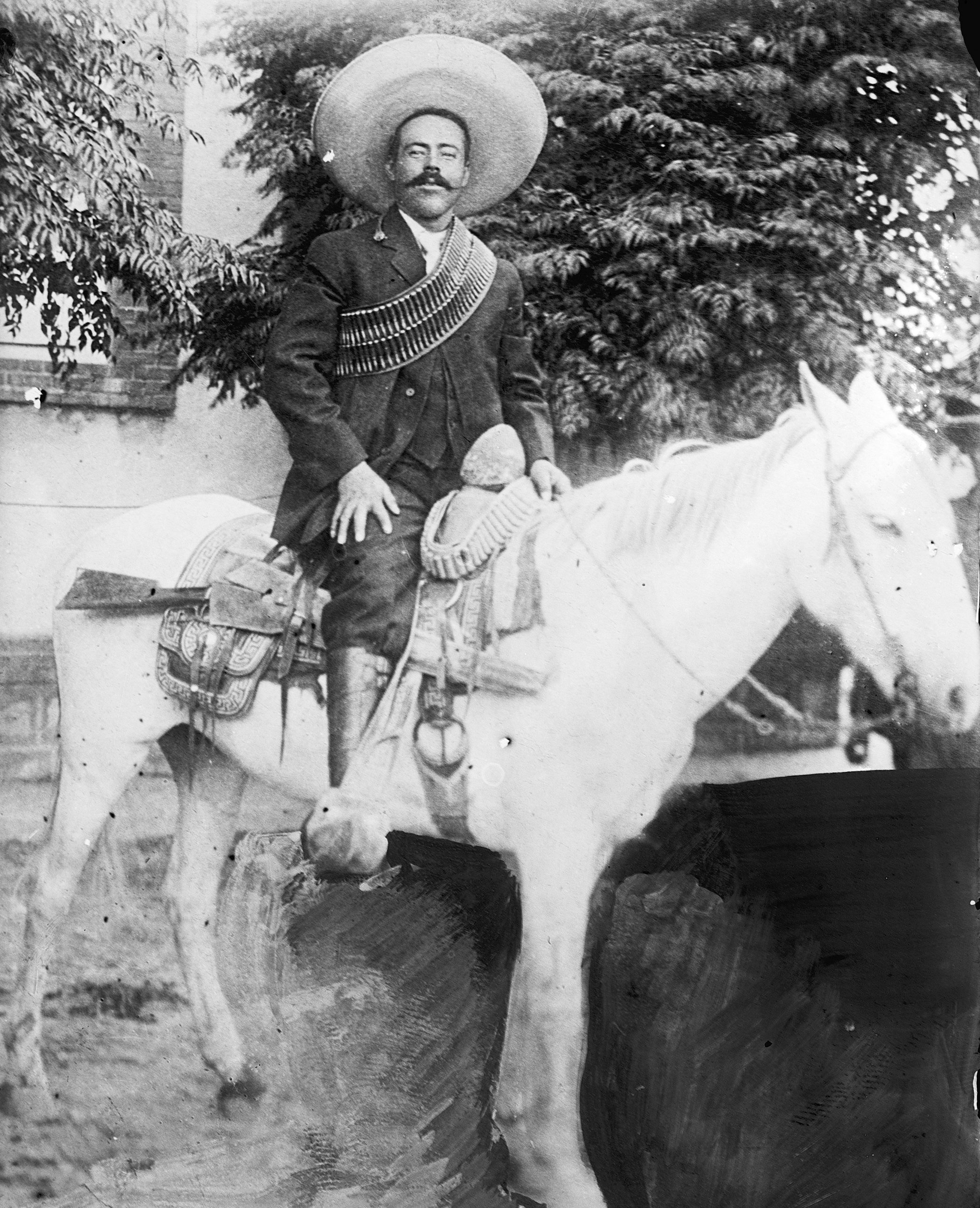
Although Pancho Villa was technically active after “The Wild West” era, this Mexican Desperado turned Revolutionary Hero kept the spirit of the West alive in his efforts to help his people, standing up to corruption, and was a key figure in the Mexican Revolution from 1910-1920.
The End of the Wild West?

While the end of the “Old West” era is debatable, most agree it came to a close sometime between 1895 and 1912, with the completion of the railroads, and the establishment of the Lower 48 States, with the additions of Utah, Oklahoma, New Mexico, and Arizona to the Union. Between the rapid development of the region, increased law enforcement, and an end to violent land disputes between settlers and the Native American reservations, the “Wild West” was no longer a lawless frontier.
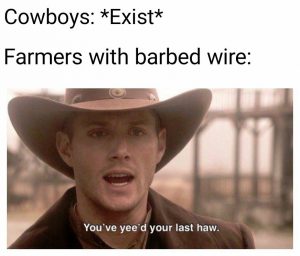
Erik Slader




